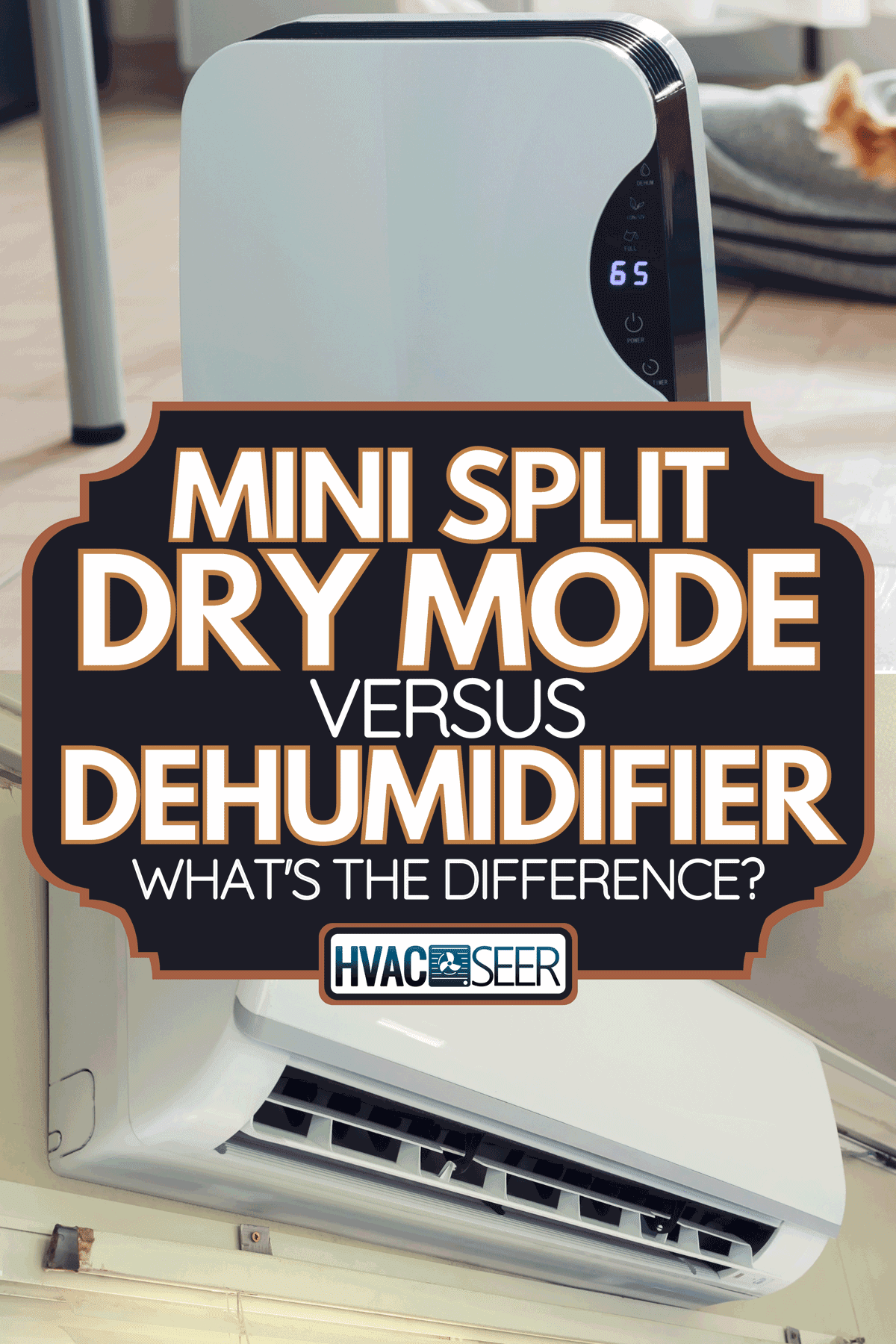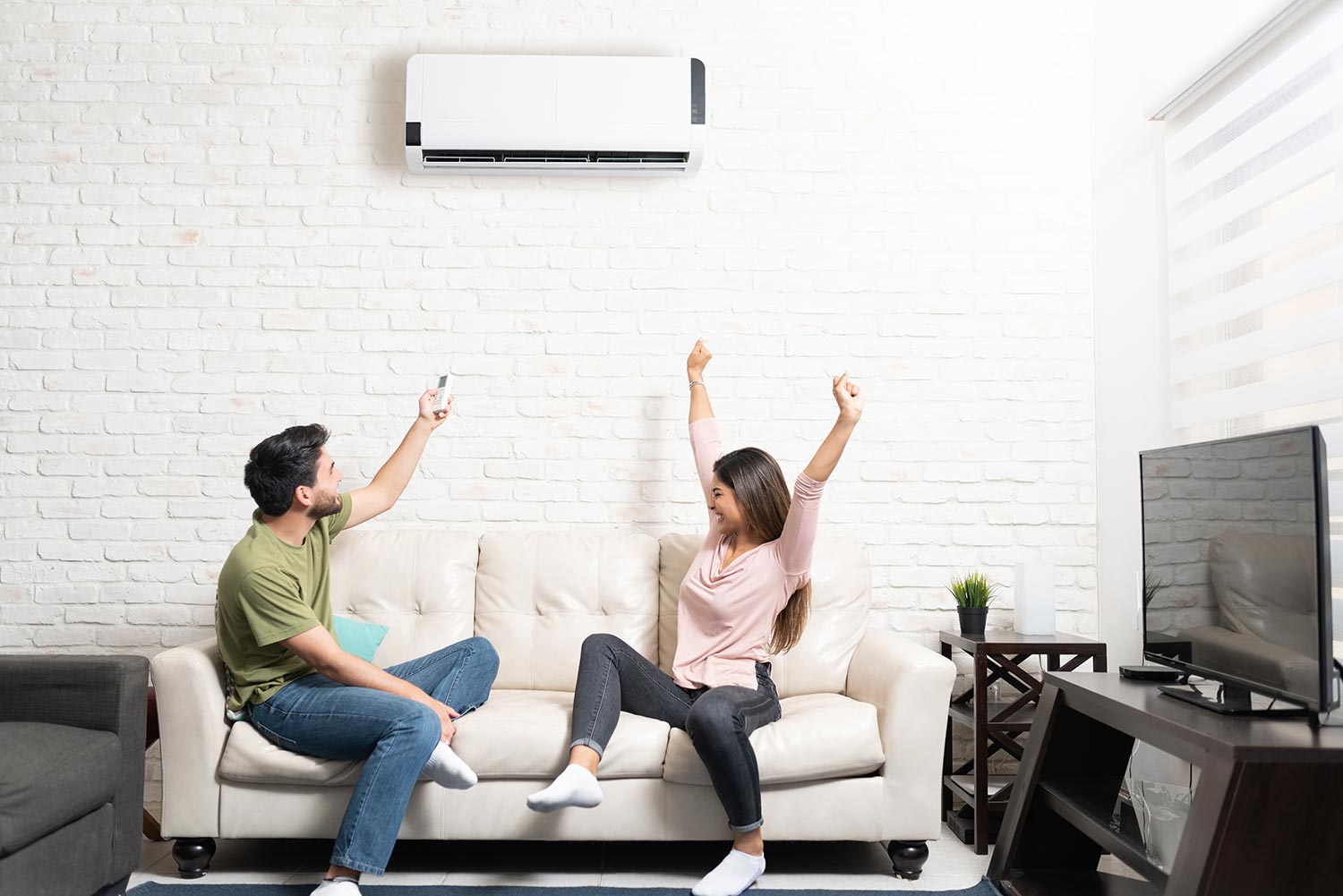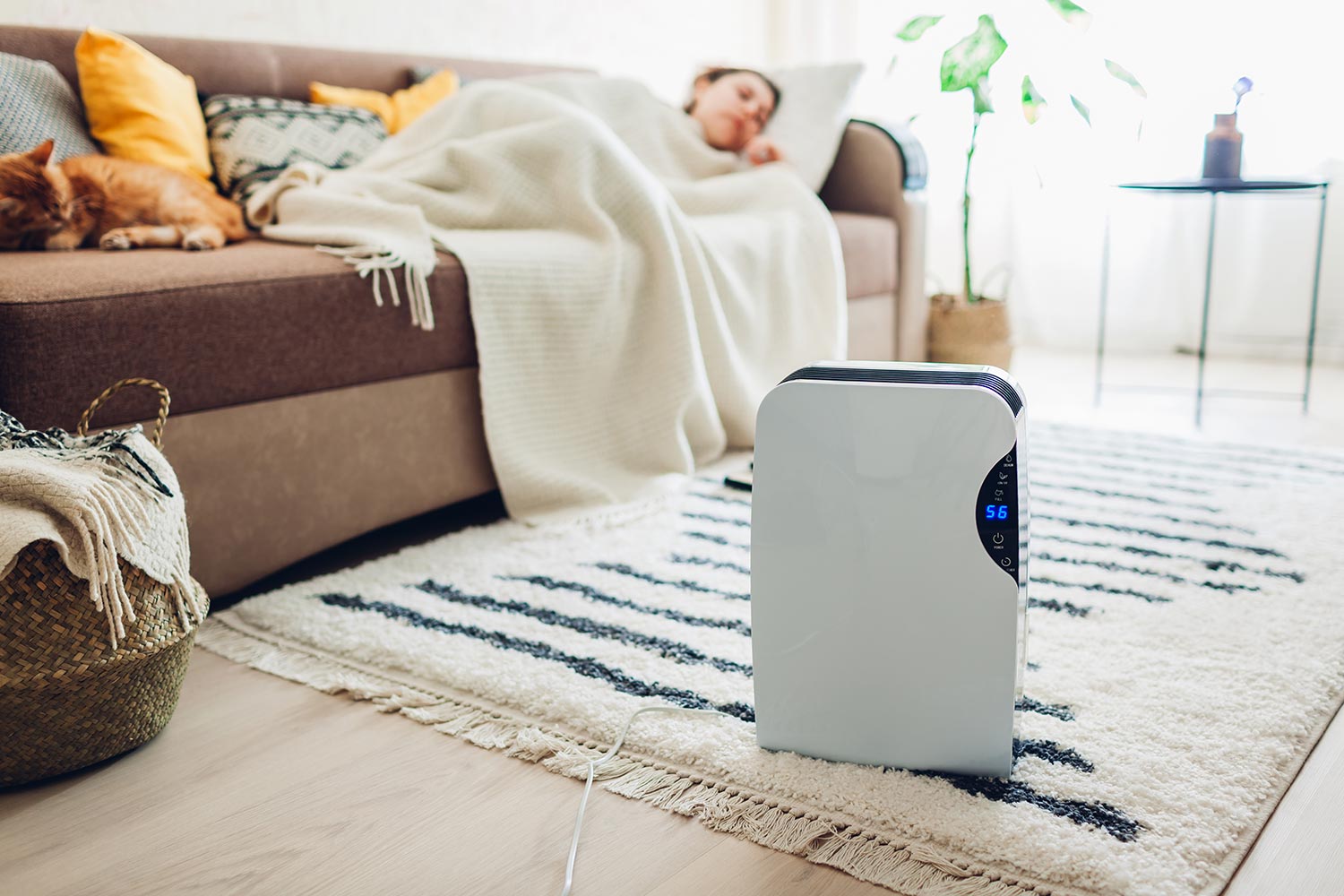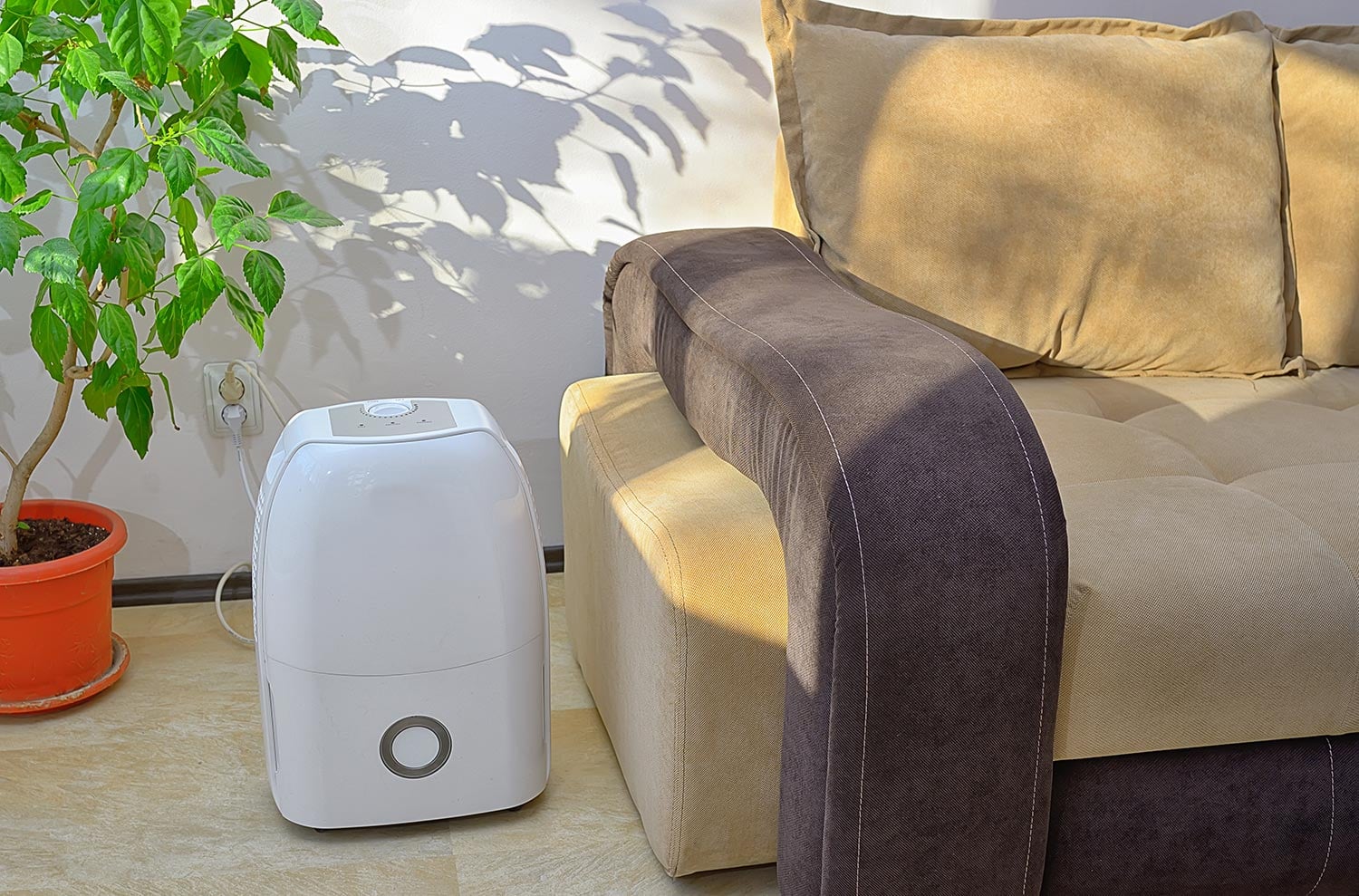Humid days can feel uncomfortable, and too much humidity can also lead to mold and mildew build-up in your home. To eliminate the risks in your home of damaged areas, funky smells, or experiencing potential health issues, we depend on devices to reduce the vapor in the air. Some people use a dehumidifier, while others utilize their mini-split's dry mode. Is there a difference between them? Is one more beneficial than the other? We've researched each to find out!
Both can efficiently remove moisture in the air but with key differences. A mini-split, set to dry mode, still releases a bit of cold air as it dehumidifies. Meanwhile, a dehumidifier only draws in the damp air to puff out dry air. It is recommended to use a dehumidifier during winter since it does not release any cold air --it even raises the temperature by releasing warm, dry air.
The difference between these machines can determine your level of comfort. You must be asking yourself what else to consider and which one best suits your lifestyle. We tackle each factor in this article, so read on to find out.

Which System Is Best for Your Home?
Deciding what to get for your home depends on some lifestyle factors. Although, both a mini-split in dry mode and a dehumidifier technically do the same job, you need to make sure which one is beneficial for your home, especially because both these machines still have some key differences. Read on to discover how differently they can function in your home.

How many people reside in your house?
A mini-split in dry mode can draw out about 1/2-gallon of moisture per day. A person produces 1-gallon of moisture every day just from doing mundane tasks, so a family of four cannot benefit much from a mini split alone.
Unless you live alone, a dehumidifier should be a better option for you since this can extract up to 10 gallons of moisture per day from your space.
How big is the area that needs to be dehumidified?
A 7-gallon dehumidifier can cover areas that span up to 1,200 square feet with 50-60% humidity, while a mini-split can dehumidify areas as big as 1,500 square feet with below 45% humidity. A mini-split can be ideal for bigger spaces, although you might be compromising on moisture capacity if you live in a more humid place.
It all depends on the amount of humidity that you need to reduce relative to the size of your space. This leads us to our next point.

What is the climate like in your area?
The biggest factor that you need to consider is your climate. If you live in a warmer area, it is better to invest in something that not only dehumidifies but also cools, especially in the summer.
Unpredictable weather best pairs with the mini-split, since it can remove moisture up to a certain level and accommodate any type of weather with its heating and cooling systems.
If the moisture level can potentially strike up to more than 45%, consider getting a dehumidifier to go with your mini-split. Read about using your dehumidifier with other cooling systems here.

Which is better for specific health conditions?
Both the mini-split and dehumidifier are good for preventing allergy symptoms. However, if you struggle with itchy and dry skin, make sure not to dry out your home completely. According to Dr. Janna Tuck, M.D., you should maintain your humidity levels around 30%-40%. Anything lower than that can irritate dry and sensitive skin.
How To Maintain a Mini-split and a Dehumidifier?
Cleaning your dehumidifier or mini-split is critical to making sure that no bacteria or molds grow from the inside of your devices. While both are sucking vapor in the air, they are also taking in mildew, dust, and bacteria. Not maintaining them defeats the purpose of making your home healthier and more comfortable.
Newer models of dehumidifiers have a light indicator telling you that it has exceeded its moisture capacity. Do not let it sit for too long because it will be at risk of growing bacteria. Frequent use requires washing once every three weeks with soap and water.
Cleaning your humidifier
- Unplug first to eliminate any risk of an accident.
- Use a clean, cotton cloth to wipe the exterior of the machine.
- Remove the tank. After removing the contents, let water and soap sit in it for a few minutes. Scrub down, rinse, and dry.
- Take out and wash the dehumidifier filter. The filter is small, no bigger than a fingernail, and it has all the mold and mildew. Slowly take it out, wash with soap and water, and rinse before putting it back.
While waiting for the parts to dry out, you can vacuum out your machine to remove any dust and dirt. Put it back together again once everything is assuredly clean and dry.
Cleaning your Mini Split HVAC System

Compared to the dehumidifier, the mini-split HVAC system's air filter requires regular cleaning, or at the very least, checking. Checking the filter is easy enough simply by opening the housing panel and removing the filter.
If the unit is used more frequently, manufacturers suggest cleaning it every two weeks. Professional cleaning is required twice a year to ensure efficiency, eliminate safety issues, and tune up the system's health.
- Turn off the power to avoid accidents.
- Open the housing unit at the front panel of your machine. Don't do it forcibly; it should open easily, once you hear a click.
- Check the filters if it now requires cleaning.
- Once you determine it needs cleaning, gently remove the filters.
- You can either vacuum the filters using low power or handwash them using lukewarm water to do away with dust. The best way is to spray it with water at medium to high pressure.
- Dry the filters and place them back in the unit.
Which System is More Energy Efficient?
To know the difference between energy efficiency, let us first learn about how each system works. The mini-split HVAC system has two modes: cool and dry. If you want to remove the air moisture but do not want to cool the temperature, you can select the dry mode.
The space is humidified by pulling in the damp air over a coil filled with refrigerant. It dries out the air by using lower fan speeds, then puffs it out. This way, you get to enjoy a dry environment without too much coolness.
Meanwhile, The dehumidifier sucks in the vaporous air which is passed over cooling coils. Water is condensed, then collected in the reservoir. There is a heating system in the machine, which warms the cool air inside, and then exhales out onto the room.
The energy efficiency between these two machines depends on the type you use and where you use it. If you use multiple dehumidifiers for your home, then it will cost you more, even if the initial purchase did not cost much.
Whole-house dehumidifiers will save more energy and make you feel more comfortable by removing 40%-60% of the humidity. However, mini-splits win in energy efficiency and cost-effectivity since it runs on an HVAC system that ensures every zone and space in your home is covered.
Energy Saving Benefits of Mini-splits
The official Energy Star Website even released a report that highlights the energy benefits of the mini-splits, including:
- Providing heating and cooling systems in one machine.
- No ductwork, meaning you can avoid faulty ductwork, which leads to small holes or splinters in the wall. These can cause air loss or unwanted air to come into your space.
- Multizone capabilities mean that you can customize different temperatures in each space in the house. For unoccupied rooms, you can save energy by turning the power down. This is also ideal for families with different tolerances for heat and cold since every condition can be adjusted via remote control, wall consoles, or smartphones.
- No heat-generation, so instead of creating heat, mini-splits transfer heat. Unlike conventional heating systems that involve ductwork, mini-split pumps are built to transfer heat which saves 60% of energy. In warmer months, the mini-split's cooling system cuts down energy by 30%. The machine uses unique compressors that adjust automatically to accommodate temperature preferences and save as much energy as it can.
Final Thoughts
Both the mini-split and the dehumidifier can upgrade your home and provide a more comfortable atmosphere. Prioritizing lifestyle factors will guarantee a pleasant experience with either of these machines that you can utilize for years.
Learn about increasing the efficiency of your mini-split in this article.
